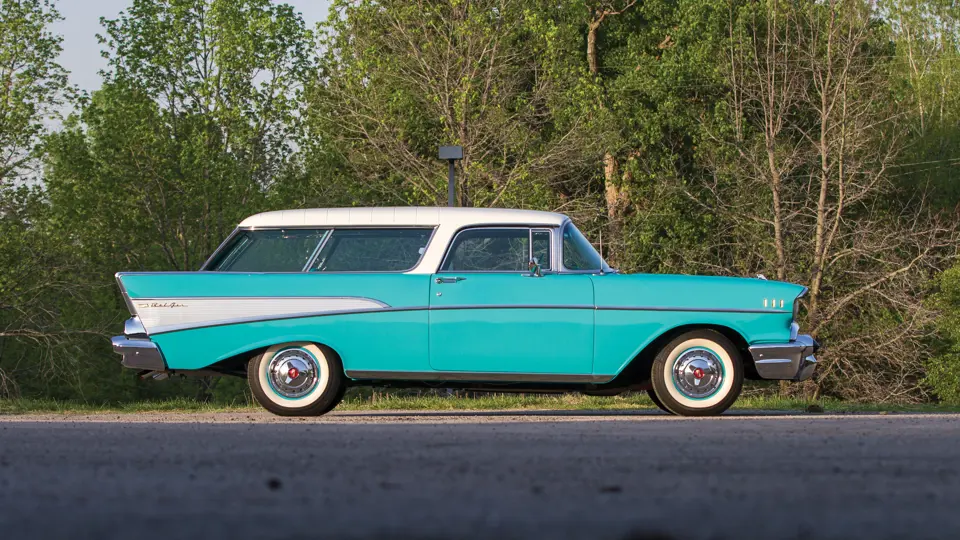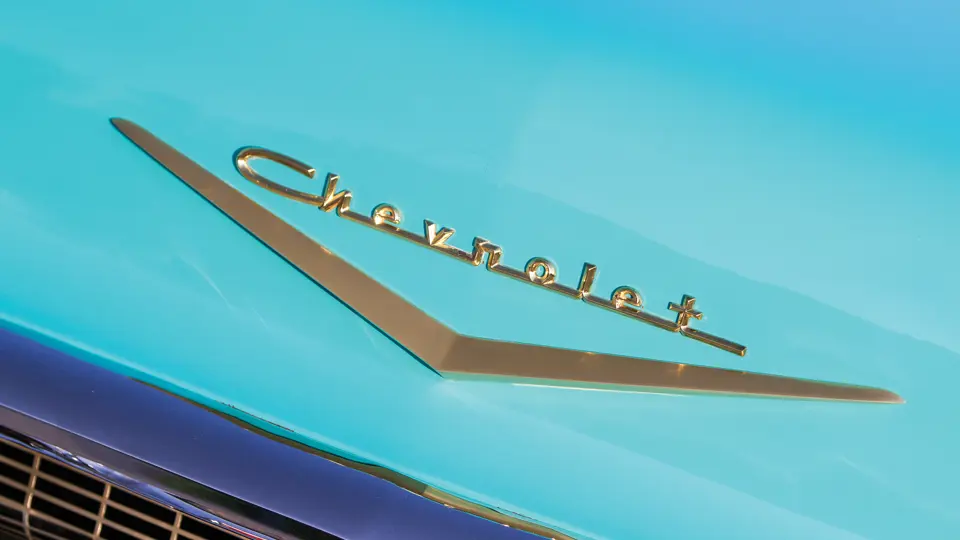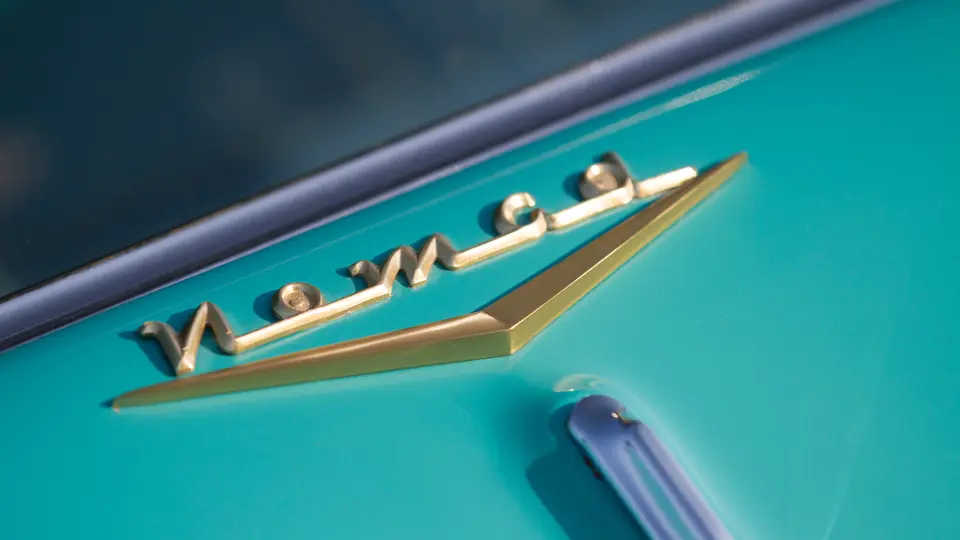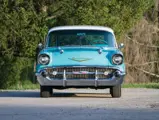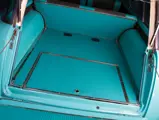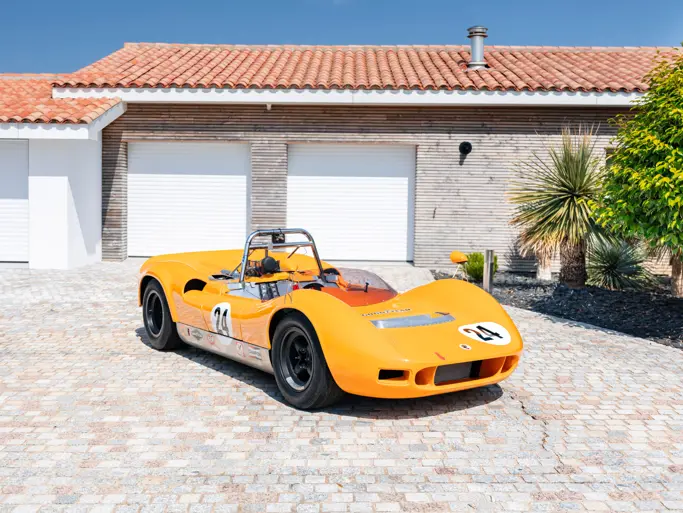220 bhp, 283 cu.in. OHV V-8 engine, two-speed automatic Powerglide transmission, coil-spring independent front suspension, live rear axle with semi-elliptic leaf springs, and four-wheel power hydraulic drum brakes. Wheelbase: 115 in.
From its first appearance as a Corvette at GM’s 1954 Waldorf Astoria Motorama, Chevrolet’s dramatic Nomad Station Wagon was a big hit. It was introduced to the regular passenger line in 1955, and its influence extended far beyond the modest total of 8,386 units built that year. This remained true over the car’s three-year lifespan, even though production actually diminished slightly year by year.
The design originated in Harley Earl’s styling section at General Motors, in a special studio headed by Carl Renner. The show car was built on a 1953 station wagon chassis, with the body rendered in fiberglass, as all Corvettes were and have been ever since. Its hallmark was the gracefully forward-slanted B-pillar, echoed in the rear contour, which was adorned with seven vertical chrome strips. The top had subtle crosswise flutes, which was the work of Renner himself.
Production as part of the regular passenger line required steel construction and a higher beltline. Although the show car had an electrically lowered rear window, the production Nomad used a liftgate that had a die-cast frame, which allowed for thinner pillars and resulted in better visibility. The show car’s full cutouts were retained for the production model’s rear wheels, and they were sufficiently prominent, as the side trim was limited to a short molding from the headlight into the front door.
For 1956 the Nomad’s side trim had a forward slant, which matched the slope of the door windows. This distinguished it from the rest of the ’56 line, which had a reverse angle at that location. However, the full-wheel cutouts at the rear were abandoned for the contours of the other passenger cars. For 1957 side trim from the Bel Air was used in its entirety, and although less distinctive than its earlier siblings, the overall design harmonizes well. This is the rarest of the trio, as just 6,103 were built. That low volume, combined with the difficulty in adapting the design to the all-new 1958 Chevys, spelled the end of the Nomad as a separate design; although, the name was appropriated for later, more conventional wagons.
The car being offered here is a nicely restored example that has been well maintained. It has recently come out of long-term ownership in a Florida collection, and it is well optioned, with power steering, brakes, and windows. The engine is the new-for-1957, 283-cubic inch small block V-8 that is equipped with the four-barrel, dual-exhaust Power Pack option, which gives it an impressive 220 horsepower. The transmission is Chevy’s stalwart Powerglide two-speed automatic. The car, finished in India Ivory over Tropical Turquoise, has a correct matching interior and period-appropriate whitewall tires, and it comes complete with a jack and matching spare tire.
Despite its innate stylishness, the Nomad has appealed to many who felt they could improve on its esthetics. As a result, many have been modified. A correctly restored Nomad from the year of lowest production is therefore difficult to find. This car, a needle in that proverbial haystack, is a rarity indeed.






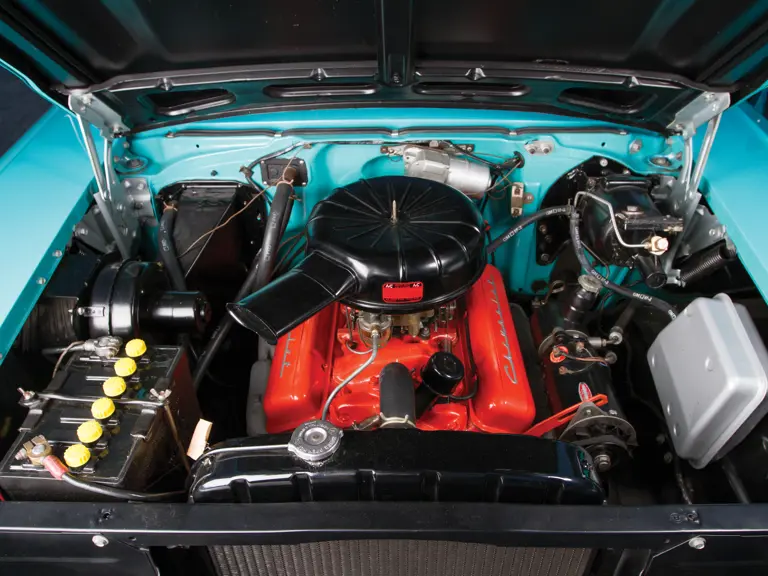
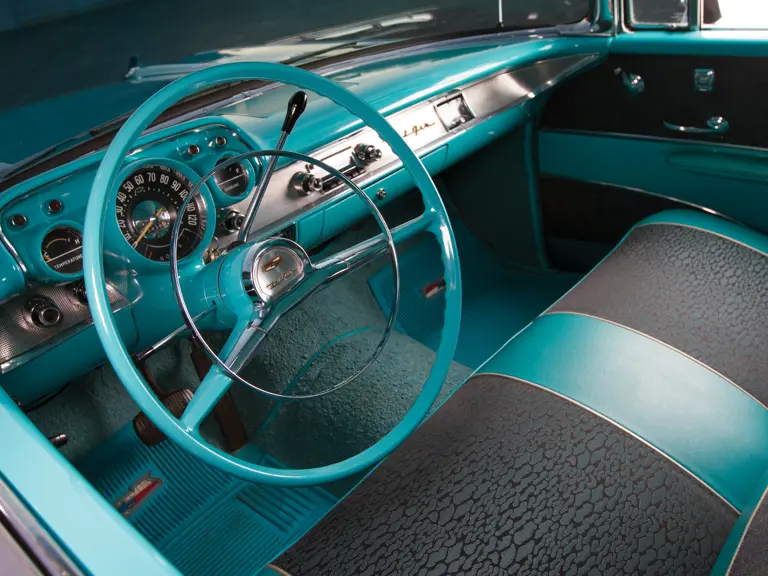
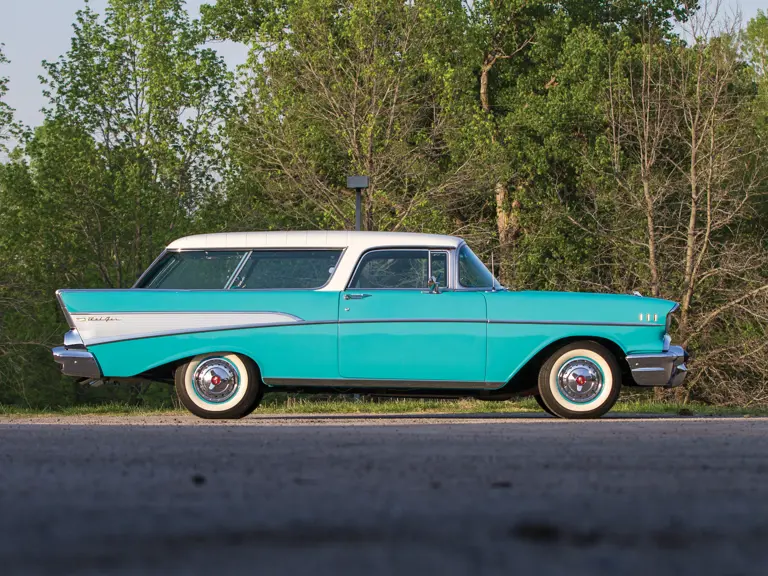
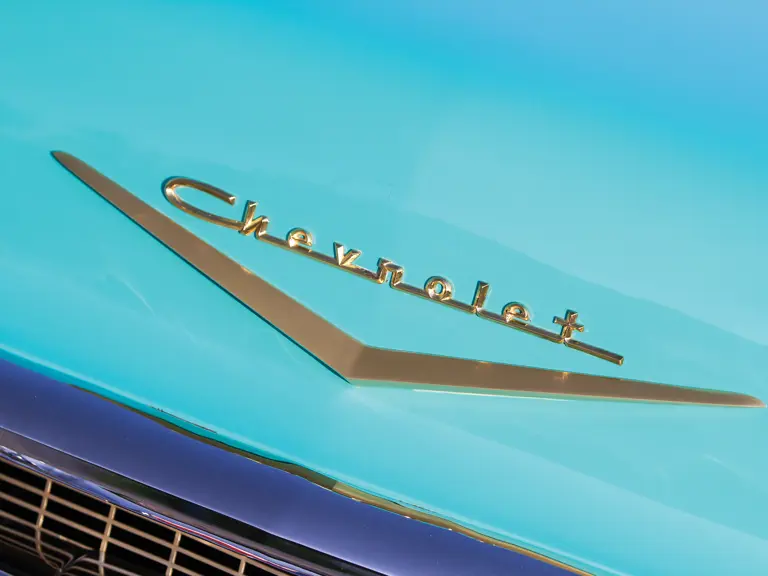
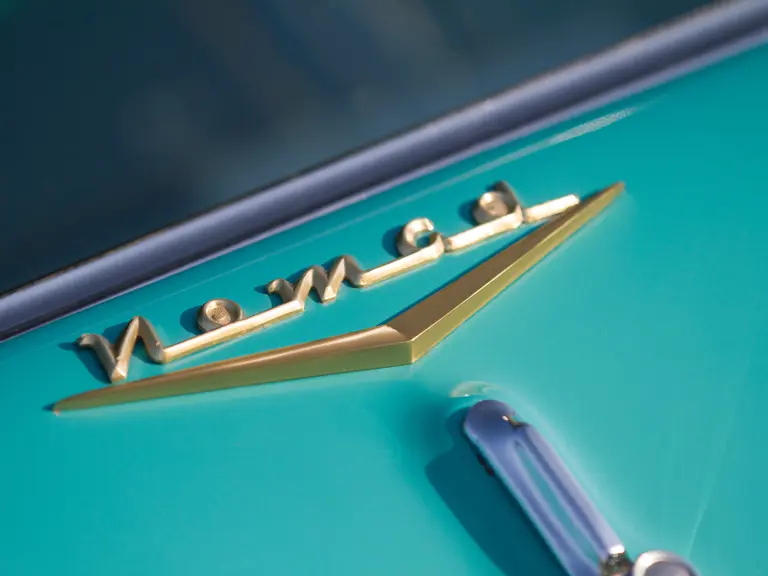
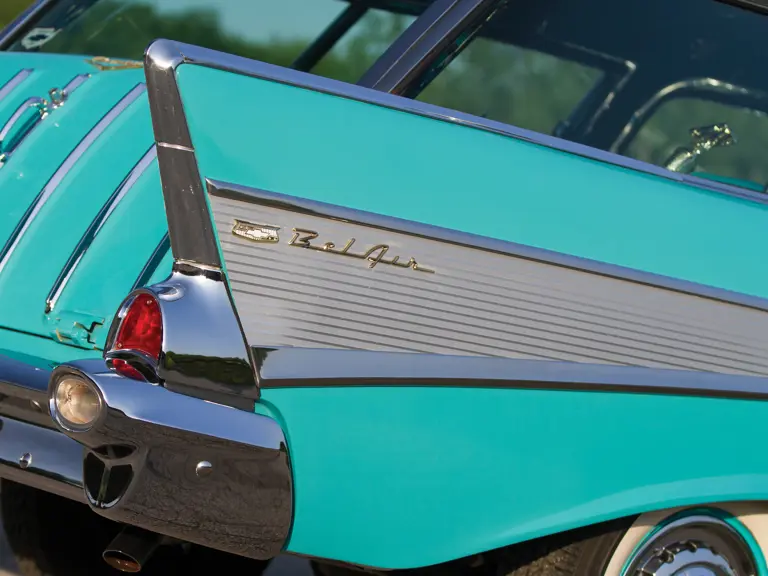
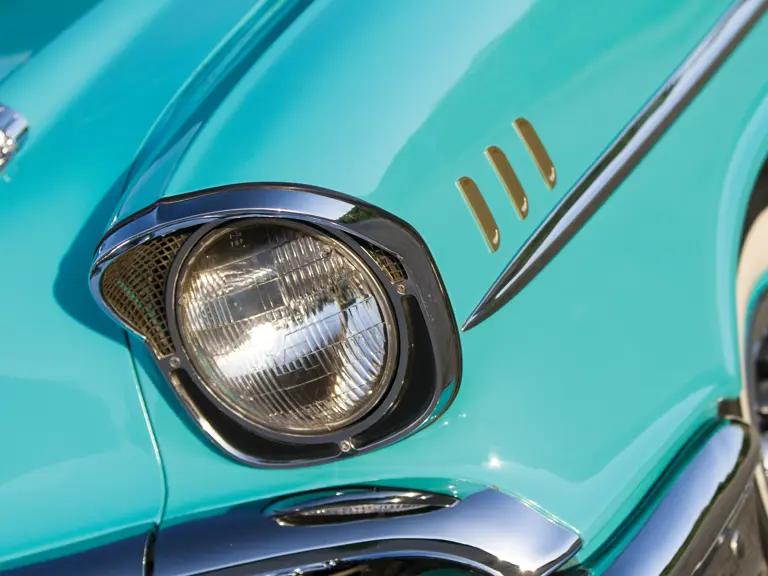


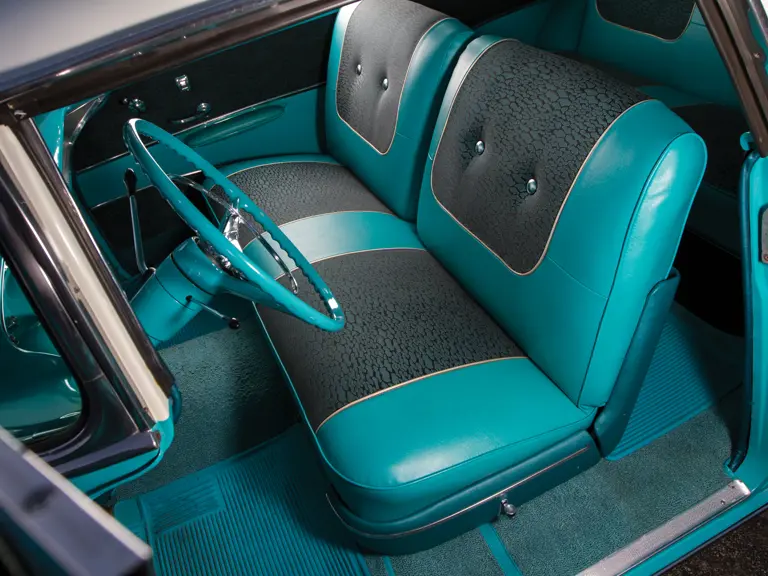

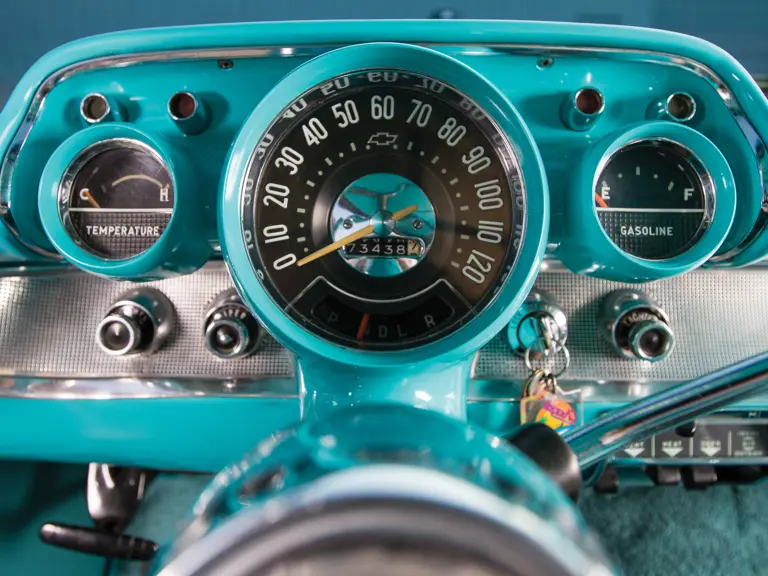

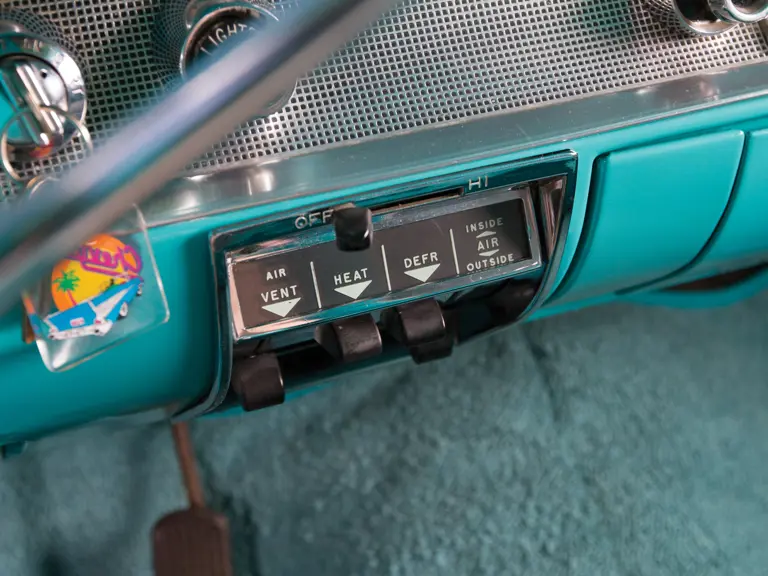
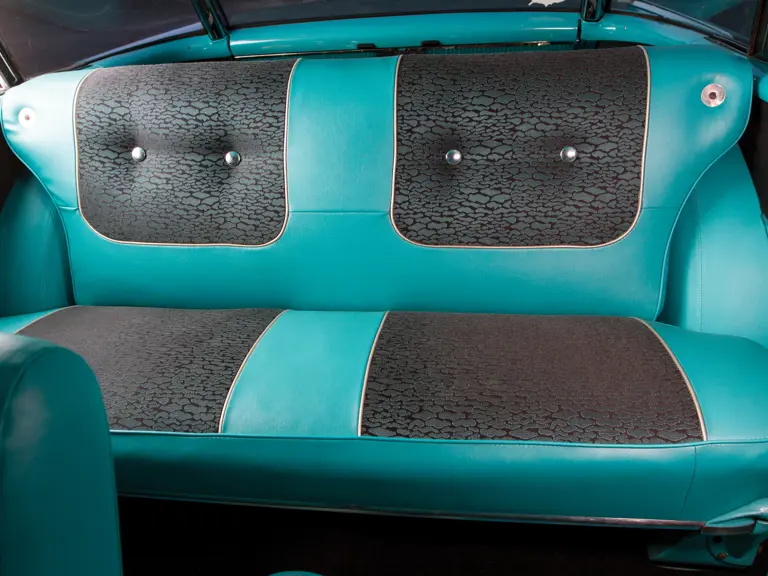
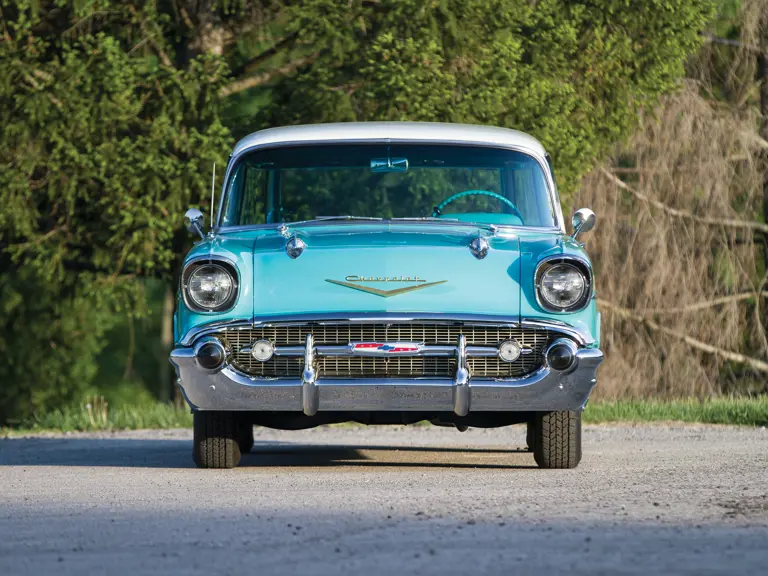
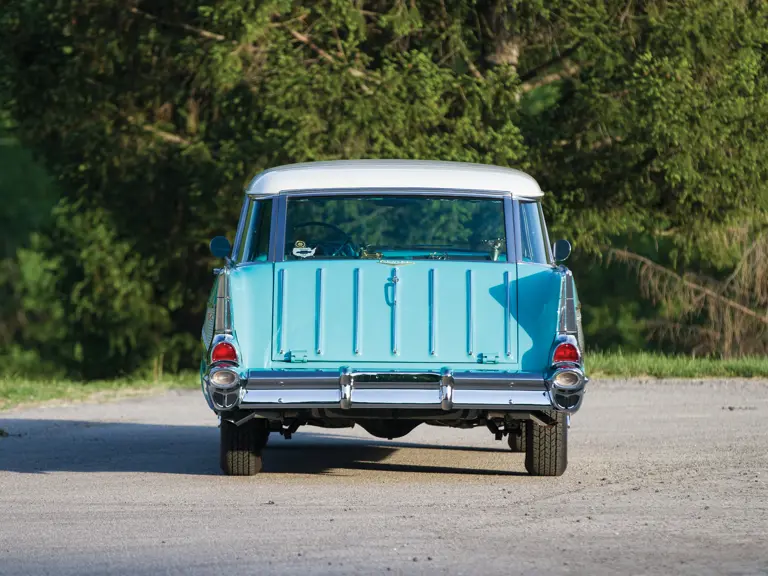
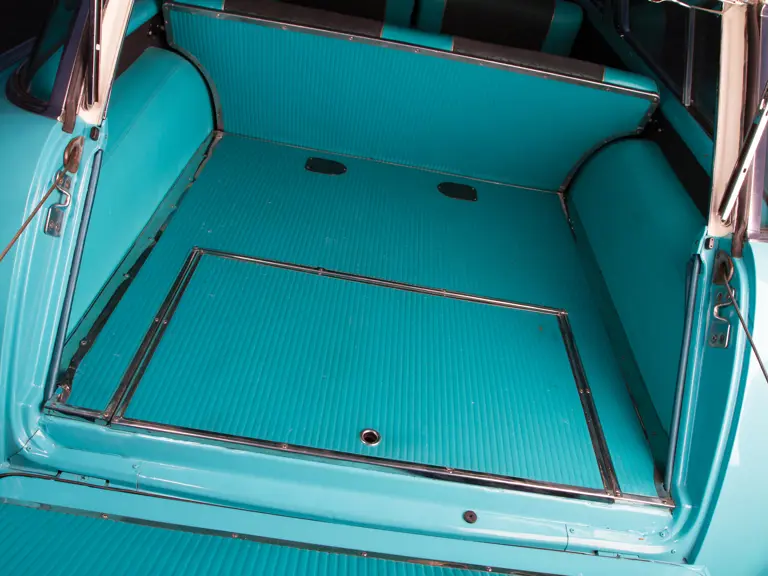
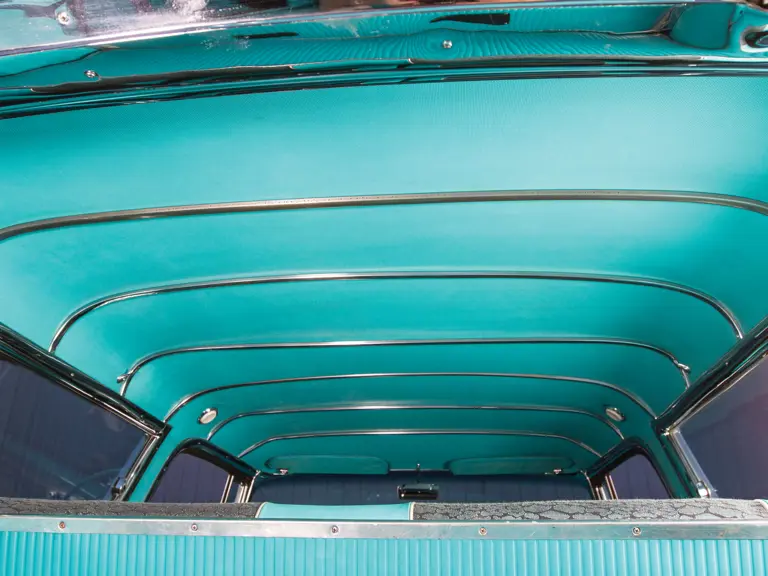

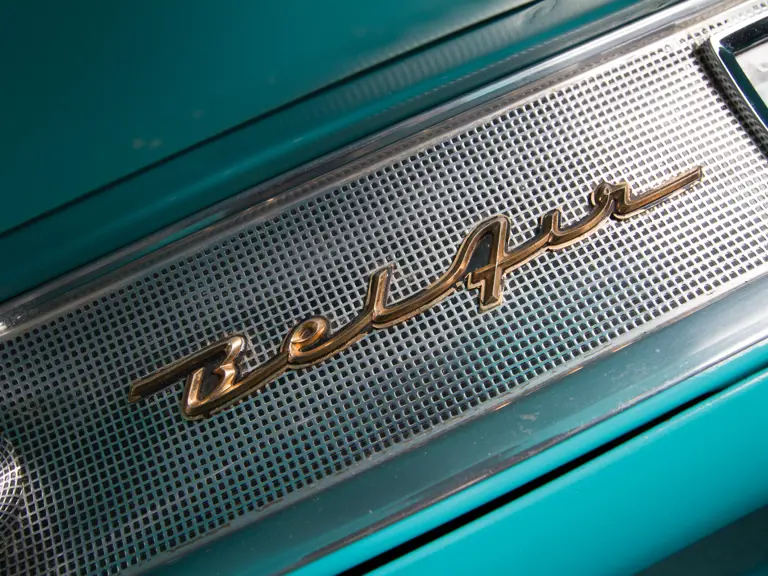

 | Plymouth, Michigan
| Plymouth, Michigan
